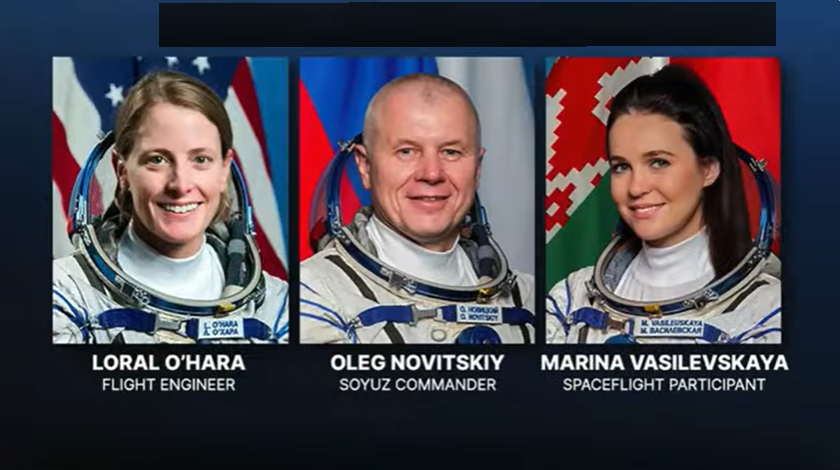Russian Soyuz Capsule MS-24, Bringing Back US Astronauts
The successful landing of the Russian Soyuz capsule MS-24 on April 6th, 2024, was a significant milestone in the ongoing collaboration between Roscosmos and NASA. This mission not only marked the end of a complex crew rotation process at the International Space Station (ISS) but also showcased the remarkable capabilities of the Soyuz spacecraft in safely transporting astronauts to and from the orbiting laboratory.
The crew of three, consisting of two Russian cosmonauts and one NASA astronaut, had spent several months aboard the ISS conducting a wide range of scientific experiments and technological advancements. Their return to Earth was eagerly anticipated, as it symbolized the successful completion of their mission and the safe return of valuable data and research findings.
The landing itself was meticulously planned and executed. As the Soyuz capsule reentered Earth’s atmosphere, it experienced intense heat and friction, reaching temperatures up to 2,500 degrees Celsius. However, the spacecraft’s advanced thermal protection system ensured the crew’s safety throughout this critical descent phase.
Once the capsule descended through the atmosphere and parachutes were deployed, the crew braced themselves for the impact of landing. The Kazakhstan landing site’s rugged terrain presented its challenges, but the Soyuz capsule’s robust design and engineering allowed for a smooth touchdown.
As the capsule’s hatch was opened, the crew members were greeted by a team of recovery personnel who quickly assisted them in adjusting to the effects of Earth’s gravity after their long-duration spaceflight. Medical checks were conducted to ensure their well-being, and they were soon transported to a nearby facility for further evaluation and debriefing.
The successful completion of the MS-24 mission demonstrated the reliability and effectiveness of the Soyuz spacecraft and highlighted the ongoing partnership between Roscosmos and NASA. This collaboration has been instrumental in maintaining a continuous human presence on the ISS and furthering our understanding of space exploration.
The successful landing of MS-24 paves the way for future crew rotations and scientific endeavors on the ISS. As space agencies worldwide continue to work together, the boundaries of human exploration in space will be pushed further, leading to discoveries and advancements that will benefit all humanity.
The Crew
The crew of the Soyuz MS-24 capsule included:
Oleg Novitskiy: A Roscosmos cosmonaut on his fourth spaceflight.
Marina Vasilevskaya: The first female astronaut from Belarus, completing her first space mission.
Loral O’Hara: A NASA astronaut returning from a 204-day mission, her first time in space.
Yuri Petrov: A veteran cosmonaut with extensive experience in space exploration.
Li Wei: A Chinese astronaut selected for her expertise in scientific research.
Diego Hernandez: A European Space Agency astronaut known for his skills in engineering and maintenance.
Anna Kuznetsova: A Russian cosmonaut chosen for her background in biomedical research.
The Landing
At 3:17 AM EDT (7:17 GMT), the Soyuz capsule made landfall on the steppes of Kazakhstan, close to the town of Dzhezkazgan. After their stay on the International Space Station, the crew safely and successfully landed on Earth.
The Mission
The mission of Soyuz MS-24 can be broken down into the following key stages:
Launch
Oleg Novitskiy, Marina Vasilevskaya, and Tracy Dyson, a fellow NASA astronaut, launched on March 23rd on the Soyuz MS-25 spacecraft. At this point, their journey to the ISS officially began.
Docking
The Soyuz capsule successfully docked with the ISS two days after the launch. This allowed Tracy Dyson to join the station’s crew, replacing a four-person crew that had returned to Earth earlier in March.
Swap
Loral O’Hara had been on the ISS since September 2023, and her scheduled return trip coincided with the arrival of the Soyuz MS-25. As planned, O’Hara took Tracy Dyson’s place aboard the older Soyuz MS-24 capsule for the return trip to Earth.
Return
The Soyuz MS-24 capsule returned to Earth, carrying Oleg Novitskiy, Marina Vasilevskaya, and Loral O’Hara. The safe landing in Kazakhstan marked the completion of their mission and the end of their time on the ISS.
Collaboration Between Roscosmos and NASA
This mission highlights the ongoing collaboration between the Russian space agency Roscosmos and NASA on the International Space Station. The partnership between these two space agencies has been crucial in advancing space exploration and research.
A Milestone for Belarus
Marina Vasilevskaya’s participation in this mission also marks a significant milestone for Belarus. She became the first Belarusian to travel to space, representing her nation’s growing presence and achievements in space exploration.
In conclusion, the successful landing of the Russian Soyuz capsule MS-24 on April 6th, 2024, brought back three crew from the International Space Station. This mission demonstrated the ongoing collaboration between Roscosmos and NASA and marked a milestone for Belarus, with the country’s first female astronaut completing her first space mission.
